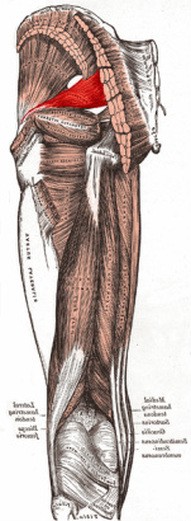HOW COMMON IS PIRIFORMIS SYNDROME?
MORE COMMON THAN
YOU EVER DREAMED!
|
About 5 million of the 26 million Americans who suffer from low back pain each year have piriformis syndrome….. Even though your back is flawless, the piriformis muscle in the buttock may tighten, go into spasm and entrap the sciatic nerve, causing the same symptoms and misery that come with herniated disks. Those who compile statistics declare that piriformis syndrome may account for as much as 50 percent of the pain that strikes in the backside and radiates down the back of the leg. Dr. Loren Fishman (MD) writing for the April 11, 2011 issue of the Huffington Post on the topic of Piriformis Syndrome
|
Back in April, doctors Kean and Nizar (Anesthesiologists) from Malaysia’s Sarawak General Hospital in Kuching, published a study in Pain Practice saying that when they ran a F.A.I.R. Test (increased H-reflex latency with modified flexion, adduction, and internal rotation on EMG), on patients with low back pain / sciatica. They found that over 17% tested positive. This was their only criteria for arriving at the diagnosis of PIRIFORMIS SYNDROME. The conclusions of their study said, “Piriformis syndrome is a painful condition that is often overlooked in the differential diagnosis of chronic buttock or low back pain.” I would have to concur.
Study after study says that Piriformis Syndrome is both difficult to diagnose. This is surely why I would characterize it as under-diagnosed —- way under-diagnosed. You’ll begin to understand why, once you understand the criteria for reaching the diagnosis. Listen to what Wikipedia says about the subject, “The diagnosis of Piriformis Syndrome is largely clinical [i.e. tests do such a poor job of showing it, your doctor will have to recognize it via patient signs and symptoms] and is one of exclusion. Diagnostic modalities such as CT, MRI, ultrasound, and EMG are mostly useful in excluding other conditions [namely disc].” However, this presents its own unique problem that I wrote on recently. In at least 50% of the lumbar MRI’s that show a DISC HERNIATION, you have to assume it is “Asymptomatic” (the disc is not where the pain is coming from). This is why it is so difficult to read too much into positive MRI findings for discs because of the absurdly high incidence of these ASYMPTOMATIC DISC BULGES.
None of this is news to those who have actually been diagnosed with Piriformsis Syndrome. If you have not yet been diagnosed, you are likely still in the process of researching —- and being run through every diagnostic test imaginable — many more than once —- and probably not finding many answers. Yet despite several studies showing an almost 100% effectiveness of CORTICOSTEROID INJECTIONS for solving this misunderstood and potentially debilitating problem, I have not seen results anywhere near that in my practice. Maybe that’s because I don’t see the medical community’s Piriformis success stories. Then again; maybe it’s because when it comes to Medical Research, it’s difficult to know who to trust (HERE, HERE, and HERE are examples).
If you are suffering from symptoms that look like Piriformis Syndrome, you might want to consider a trip to Mountain View, Missouri. I have been successfully treating people with Piriformis Syndrome for nearly 15 years. For more information on Piriformis Syndrome, you can go HERE or HERE.

